Key Milestones in Medical Use of Cannabis: the Discovery of the Endocannabinoid System
- “By using a plant that has been around for thousands of years, we discovered a new physiological system of immense importance,” Raphael Mechoulam
For anybody interested in the increasing use of cannabis to treat medical conditions, it is worth recalling some of the scientific events underpinning this situation.
These events have not only helped to change our understanding of how cannabis exerts its effects in the human body, but also on our way of thinking about the potential uses of cannabis.
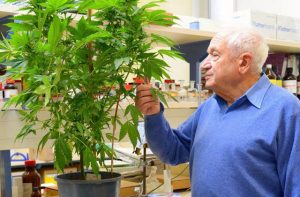
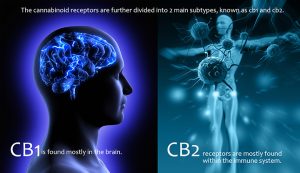
“I believe that small, regular doses of cannabis might act as a tonic to our most central physiological healing system.”
– Dustin Sulak
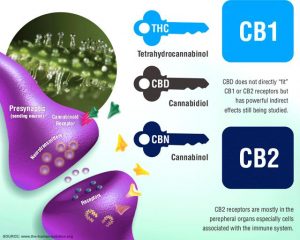
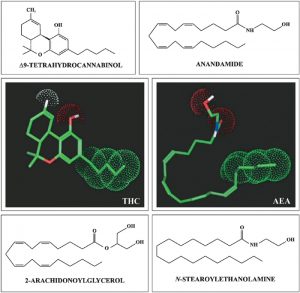
-
Endogenous arachidonate-based lipids, [anandamide (N-arachidonoylethanolamide, AEA) and 2-arachidonoylglycerol (2-AG)]; these are known as “endocannabinoids” and are physiological ligands for the cannabinoid receptors (ligands are substances that form complexes with biomolecules to serve a biological purpose).
-
The enzymes that synthesise and degrade the endocannabinoids, such as fatty acid amide hydrolase or monoacylglycerol lipase.
-
The cannabinoid receptors CB1 and CB2, two G protein-coupled receptors that are located in the central and peripheral nervous systems.
-
The neurons, neural pathways, and other cells where these molecules, enzymes, and one or both cannabinoid receptor types are all co-localised from the endocannabinoid system.
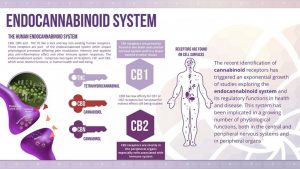
References and further Reading
1. Gaoni, Y. and Mechoulam, R. (1964). Isolation, structure and partial synthesis of an active constituent of Hashish. Journal of the American Chemical Society 86, 1646–1647.
2. Devane, W.A., Dysarz, F.A. 3rd, Johnson, M.R., Melvin, L.S. and Howlett, A.C. (1988). Determination and characterization of a cannabinoid receptor in rat brain. Molecular Pharmacology 34, 605–613.
3. Matsuda, L.A., Lolait, S.J., Brownstein, M.J., Young, A.C. and Bonner, T.I. (1990). Structure of a cannabinoid receptor and functional expression of the cloned cDNA. Nature 346, 561–564.
4. Munro, S., Thomas, K.L. and Abu-Shaar, M. (1993). Molecular characterization of a peripheral receptor for cannabinoids. Nature 365, 61–65.
5. Devane, W.A., Hanus, L., Breuer, A., Pertwee, R.G., Stevenson, L.A., Griffin, G., Gibson, D., Mandelbaum, A., Etinger, A. and Mechoulam, R. (1992). Isolation and structure of a brain constituent that binds to the cannabinoid receptor. Science, 258, 1946–1949.
(1995). Pertwee, R.G., Griffin, G., Bayewitch, M., Barg, J. and Vogel, Z.
6. Mechoulam, R., Ben-Shabat, S., Hanus, L., Ligumsky, M., Kaminski, N.E., Schatz, A.R., Gopher, A., Almog, S., Martin, B.R., Compton, D.R., Identification of an endogenous 2-monoglyceride, present in canine gut, that binds to cannabinoid receptors. Biochemical Pharmacology 50, 83–90.

Excellent article for my research, many thanks.